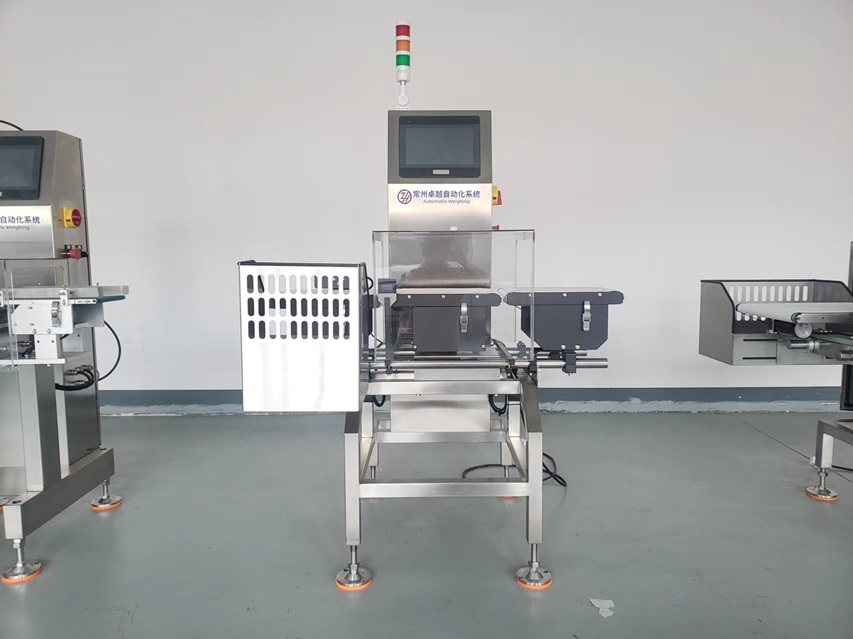Common problems of dynamic checkweighers in production lines
As an important tool for quality control, dynamic
checkweighers play an indispensable role. However, in production line work, dynamic
checkweighers will also encounter various problems, which may affect their accuracy and stability, and thus affect the operating efficiency of the entire production line. This article will analyze the common problems of
Dynamic Checkweighers in production line work and propose corresponding solutions.

1. Decreased equipment accuracy
After long-term use, the accuracy of
Dynamic Checkweighers may gradually decrease. This may be due to a variety of reasons such as sensor aging, mechanical component wear, and changes in environmental factors (such as temperature and humidity). The decrease in accuracy will cause the measured value to deviate from the actual value, thereby affecting product quality control.
Solution: Regularly calibrate and maintain the dynamic checkweigher to ensure that it is in good working condition. At the same time, pay attention to keeping the environment around the equipment stable to avoid the influence of factors such as temperature and humidity on the accuracy of the equipment.
2. Weighing speed is too slow
On a high-speed production line, if the weighing speed of the dynamic checkweigher is too slow, it will cause the production line to be blocked and reduce production efficiency. The slow weighing speed may be due to insufficient equipment performance, slow data transmission speed, slow software processing speed, etc.
Solution: According to the actual needs of the production line, select a dynamic checkweigher with appropriate performance. At the same time, optimize data transmission and software processing procedures to increase the weighing speed of the equipment.
3. Frequent abnormal alarms
When the dynamic checkweigher detects abnormal product weight, it will issue an alarm signal. However, if the alarm is too frequent, it will affect the normal work of the operator and even lead to misjudgment. Frequent abnormal alarms may be caused by excessively high equipment sensitivity, interference from environmental factors, and quality problems of the product itself.
Solution: According to the actual quality of the product, reasonably set the sensitivity of the equipment. At the same time, pay attention to eliminating the interference of environmental factors to ensure that the equipment can accurately judge the quality of the product. For quality problems of the product itself, the production process should be adjusted or the raw materials should be replaced in time.
4. High equipment failure rate
During long-term use, the dynamic checkweigher may have various faults, such as sensor damage, circuit board failure, loose mechanical parts, etc. These faults will not only affect the normal use of the equipment, but also pose a potential threat to product quality.
Solution: Choose a dynamic checkweigher with reliable quality to ensure that the equipment has good stability and durability. At the same time, regularly maintain and inspect the equipment to promptly discover and deal with potential fault hazards. For any faults that have occurred, professional maintenance personnel should be contacted in time to handle them and ensure that the equipment can be restored to normal use as soon as possible.
5. Complex and inconvenient operation
Dynamic checkweighers with complex and inconvenient operation will increase the workload of operators and reduce work efficiency. This may be due to unreasonable equipment design, unfriendly software interface, too many function settings, etc.
Solution: When purchasing a dynamic checkweigher, you should choose equipment that is easy to operate and has practical functions. At the same time, the equipment supplier should provide comprehensive training and technical support services to help operators master the use of the equipment. In addition, the design of the equipment should fully consider human factors to ensure that the operating interface is friendly and easy to use.
6. Insufficient data management and analysis functions
In modern production lines, data management and analysis are crucial. However, some dynamic checkweighers have deficiencies in data management and analysis and cannot meet the actual needs of enterprises.
Solution: Choose a dynamic checkweigher with powerful data management and analysis functions to ensure that production data can be collected, stored and analyzed in real time. At the same time, the equipment supplier should provide flexible data export and import functions to facilitate data exchange between enterprises and other systems. In addition, the equipment should also have strong data processing capabilities and be able to quickly analyze and process large amounts of data.
